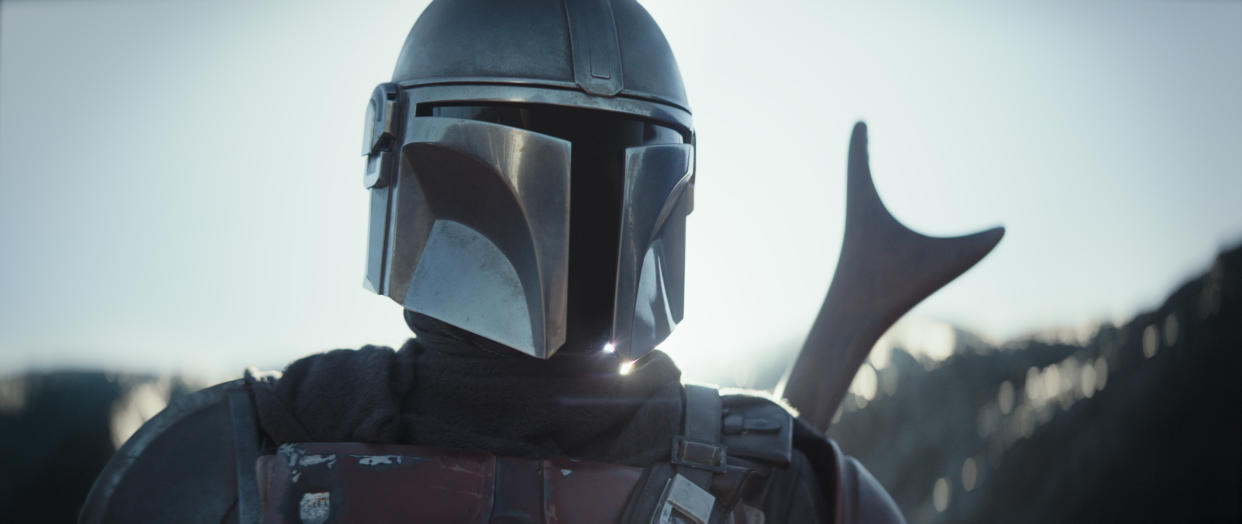‘The Mandalorian’: How Ludwig Göransson’s Retro-Futuristic Score Created a New ‘Star Wars’ Mystique

For Oscar-winning composer Ludwig Göransson (“Black Panther”), tackling “The Mandalorian” Disney+ series provided an opportunity to channel his “Star Wars”-loving inner child while creating a new kind of musical mystique. His deeply personal, exotic score perfectly captures the loneliness of bounty hunter Mando (Pedro Pascal), as well as his determination to protect The Child (Baby Yoda) from The Client (Werner Herzog).
“What’s interesting is that it’s about a lone rider, a gunslinger,” said Göransson (who recently scored Christopher Nolan’s trippy “Tenet.”) “And, today, in any film or TV show, there are so many stories going on at once, and for this show you’re just following one man and his perspective the whole time. And you don’t get his facial expressions because he’s wearing a helmet. So I knew that there was a lot of ground to cover with different music, which essentially had to [convey that].”
More from IndieWire
Tyler Perry to Receive Governors Award from Television Academy
'The Crown': Dressing Olivia Colman's Queen Elizabeth Boldly for Season 3's Mid-Life Crisis
When the Swedish composer first met with Jon Favreau in his L.A. office during pre-production to discuss the showrunner’s vision for “The Mandalorian,” he soaked up the stunning visual concept art from Industrial Light & Magic while discussing the concept of incorporating Akira Kurosawa’s samurai movies with Sergio Leone’s spaghetti westerns. Musically, that enabled Göransson to think about channeling the offbeat scores of composers Masaru Sato and Ennio Morricone for this dystopian “Star Wars” world, finding his own signature sounds.
“After talking to Jon and studying the visuals and the script, I locked myself in my studio for a month with only a bunch of instruments,” Göransson said. “I wanted to take a step away from the computers because I wanted to go back to how I created music as a child — and the playfulness of it. And I wanted to play instruments that I could physically touch.”
This included the bass recorder, a very simple woodwind instrument which he had never played before, and the piano, guitar, drums, and bass. From these instruments, Göransson created the sound that formed the basis of the themes. “I needed to have the sound of the world with a unique palette,” he said. “My goal for the main theme was to create that magic that I remember feeling as a kid, growing up loving ‘Star Wars’ and the music [of John Williams].” To convey the intimacy of Mando’s story, he started with the bass recorder to emulate the flute.
“After that month, I went to set and visited Jon, who was shooting, I think, with Bryce [Dallas] Howard,” Göransson said. “I had my cellphone with me and I played the first theme for Jon, and, after hearing the first two notes of the woodwind recorder, he said, ‘That’s it! — that’s the sound!'”
Göransson developed a three-part approach to the score comprised of organic instruments, synthesizers, and the romantic sweep of a symphonic orchestra (recorded at Fox). In addition, all of the instruments were treated with delay and reverb, which makes it hard to identify them, and Göransson wanted the score to sound futuristic as well. “Every episode is a short movie,” he said. “I knew the scope and the sound of the music had to take us to many different places.”
For percussion, Göransson used programmed drum sounds, exotic African drums, jaw harp, and cymbals in water. Action scenes involved numerous fights with droids and robots, which inspired him to turn on his “modern production button and really start playing with electronic instruments and [other] interesting elements coming together,” he added.
For “The Baby” theme, the composer took Favreau’s suggestion to start from Mando’s perspective, so he began with the recorder. “Jon’s idea was he’s not so cute,” Göransson said. “But then after the relationship starts getting closer, the Child has an impact on him and takes you to a more emotional place. At the end of the very last episode, the theme develops into a big [orchestral] suite. It was maybe in awe of the sound of John Williams.”
Best of IndieWire
Sign up for Indiewire's Newsletter. For the latest news, follow us on Facebook, Twitter, and Instagram.



